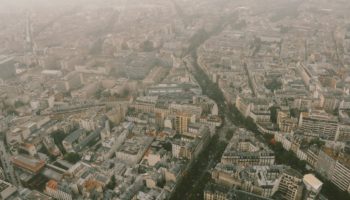Reservation time limit and itinerary calculation methods are important parameters for choosing a Demand-Responsive Transport (DRT) solution.
Reservation the day before or last minute
There are three main categories:
- DRT services requiring a reservation the day before. This time slot is often sufficient for people who use the service for commuting. However, it does not fit to other needs (shopping, leisure, etc.).
- DRT services with a 2 hours reservation time limit. Allowed by technical improvements but also and above all by compromises on other points. This delay is ultimately quite little different from the previous case in its advantages and drawbacks.
- DRT with real time reservation. Like Uber and Lyft, users can book their trip as late as they want. The DRT vehicle will pick them up as soon as possible. Real time reservations is a real plus. In Orléans, when real-time reservations were put in place, more than 30% of reservations were made last minute, resulting in a significant increase in traffic. In addition, some use cases are only possible if real time reservation is possible. For example, an airport DRT service. Indeed, with the plane delays and baggage claim time, users are never sure when they can be picked up.
Different methods of itinerary calculation
Some Demand-Responsive Transport operate following the “virtual line” service design. They operate like a conventional bus line, except that they only stop at requested stops. Simple to set up, the interest is also very limited. In fact, there is little optimization in terms of time or mileage since the itinerary remains unchanged. Also, they will not be able to cover a larger area than a conventional fixed line.
On the other hand, there are DRT solutions which make it possible to vary the itineraries according to user requests. They follow a “zonal” service design. In this case, operating optimizations are important.
Zonal Demand-Responsive Transport
- Some “zonal” DRTs require human intervention. The transit operator receives indications allowing him to make an informed choice when he assigns a person to a bus. The trajectory is therefore made up by the human using the machine or by the machine using the human.
- Other “zonal” DRT solutions build the itineraries using an algorithm once all the reservations have been filled in. This therefore requires stopping reservations before the start of the service (one night or half a day).
- Finally, some solutions, based on artificial intelligence, are capable of creating itineraries as reservations are made. This allows in particular the real-time reservation like Padam Mobility solutions.
Under the name “Demand-Responsive Transport” there is therefore, on the one hand, a service which follows a predetermined line and, on the other hand, a service which is capable of optimizing itineraries in real time according to user requests. Not all solutions fit to all uses cases, and choosing the right tool is a crucial step for the success of a Demand-Responsive Transport service.
Read more about Padam Mobility Demand-Responsive Transport solutions
Read more about other parameters to keep in mind when choosing a Demand-Responsive Transport solution





